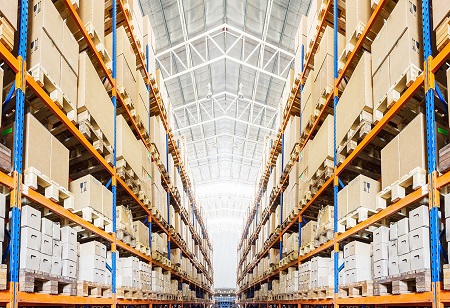Industrial packaging is a vital activity across industries such as chemicals, pharmaceuticals, lubricants, food and beverages, and construction. Throughout the journey of a product from the manufacturing unit to the seller, packaging has emerged as one of the primary concerns. With the increasing volume of products being transported across regions, the importance of bulk industrial packaging has surged manyfold. In addition, there are other factors like better product innovations and overhaul of value chains and business models that are contributing to this evolution. According to a report by Mordor Intelligence, the market is expected to become worth USD 73.01 billion by 2025, growing at a CAGR of 3.53 percent till 2025.
By integrating the packaging materials with new technologies, one can enable real-time monitoring and keep track of the shipments. The e-commerce revolution has given a major push to the packaging requirements, exhorting the players in this segment to come up with better and innovative ways of packaging.
As a result, we are seeing that the suppliers of packaging materials have started furnishing improvements to key raw materials, in numerous ways like better puncture and abrasion resistance, stronger support down-gauging, and enhanced chemical resistance.
Talking about eco-sustainable packaging, Gaurav Jalan, Founder, Packman Packaging says, “The industry’s opinion is that eco-sustainable packaging means packaging that is fully environmentally-friendly, made out of renewable resources and cent percent recyclable, such as a paper or cardboard. A good example is a corrugated paper, which gets utilized, transformed into the paper mill and then comes as a brand-new packaging. Also, multiple industry research affirms the importance of eco-sus-tainable packaging in the market and suggests that 4 out of 5 users like to go for products made out of cardboard.”
Personalization and customization
The packaging industry is witnessing more and more digital efforts being made to reduce the cost and gain a competitive edge with consumers. One of the several examples is that greater customer value can be generated by integrating technology in packaging. With the advent of digital printing, packagers now have a longer leash in terms of personalization and customization compared to the scope of mechanical processes. Hence, most of the packaging companies have already switched from analog to digital. However, it takes time to restructure a factory in its entirety. In 2020, there are only a few companies that are reluctant to get on board the digital train and there are a multitude of players looking to tap into this market potential.
With the increasing importance of adopting environment-friendly measures in packaging, recycling has become mandatory and packaging materials are being recycled to enhance sustainability as well as safeguard the environment.
